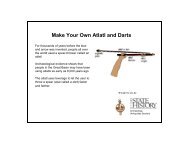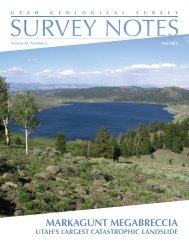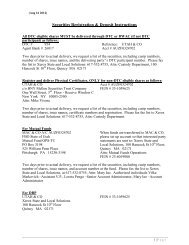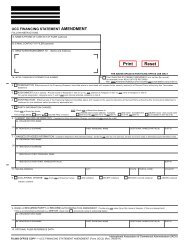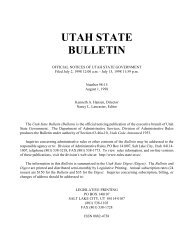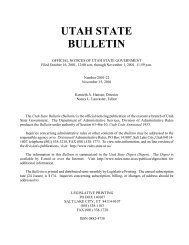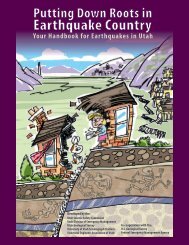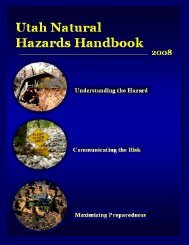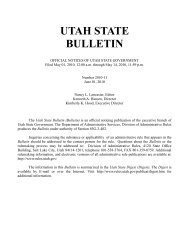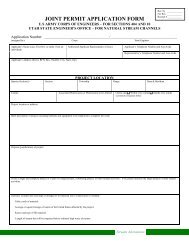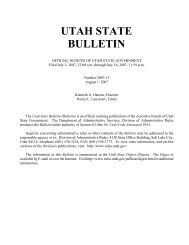Lynx avoidance [PDF] - Wisconsin Department of Natural Resources
Lynx avoidance [PDF] - Wisconsin Department of Natural Resources
Lynx avoidance [PDF] - Wisconsin Department of Natural Resources
You also want an ePaper? Increase the reach of your titles
YUMPU automatically turns print PDFs into web optimized ePapers that Google loves.
Sign<strong>Lynx</strong> tracks in snow are generally less distinct thanbobcat tracks and <strong>of</strong>ten display a powder-puffappearance as a result <strong>of</strong> abundant foot hair. In wet orcompacted snow, lynx tracks sometimes displaysmaller toe pads than are evident in bobcat tracks.Back feet <strong>of</strong>ten follow in the front foot tracks <strong>of</strong> bothspecies. When walking, the stride (distance betweenfootprints <strong>of</strong> the same foot) is 5–16 inches for bobcatsand 12–28 inches for lynx. Both bobcat and lynxtrack trails tend to “wander” compared with the morestraight-line patterns <strong>of</strong> wild canids (foxes, coyotes,H.Golden, ADF&GA set <strong>of</strong> lynx tracks in snow.B. Giddings, Montana FWPA set <strong>of</strong> bobcat tracks in snow.10


![Lynx avoidance [PDF] - Wisconsin Department of Natural Resources](https://img.yumpu.com/41279089/10/500x640/lynx-avoidance-pdf-wisconsin-department-of-natural-resources.jpg)
